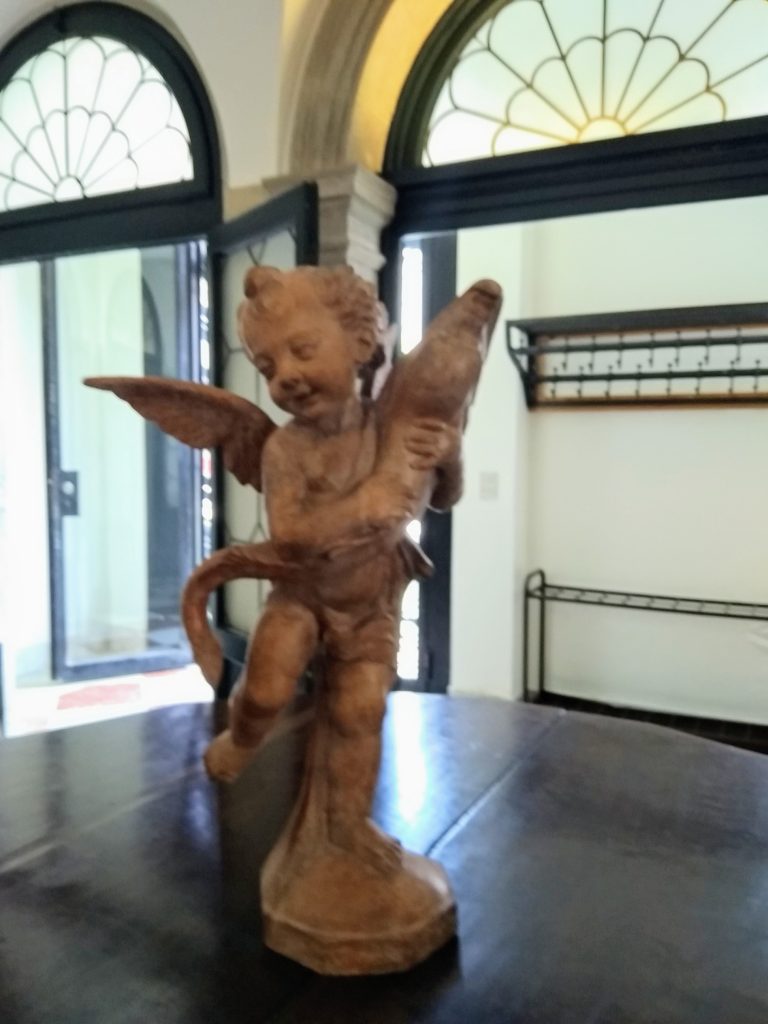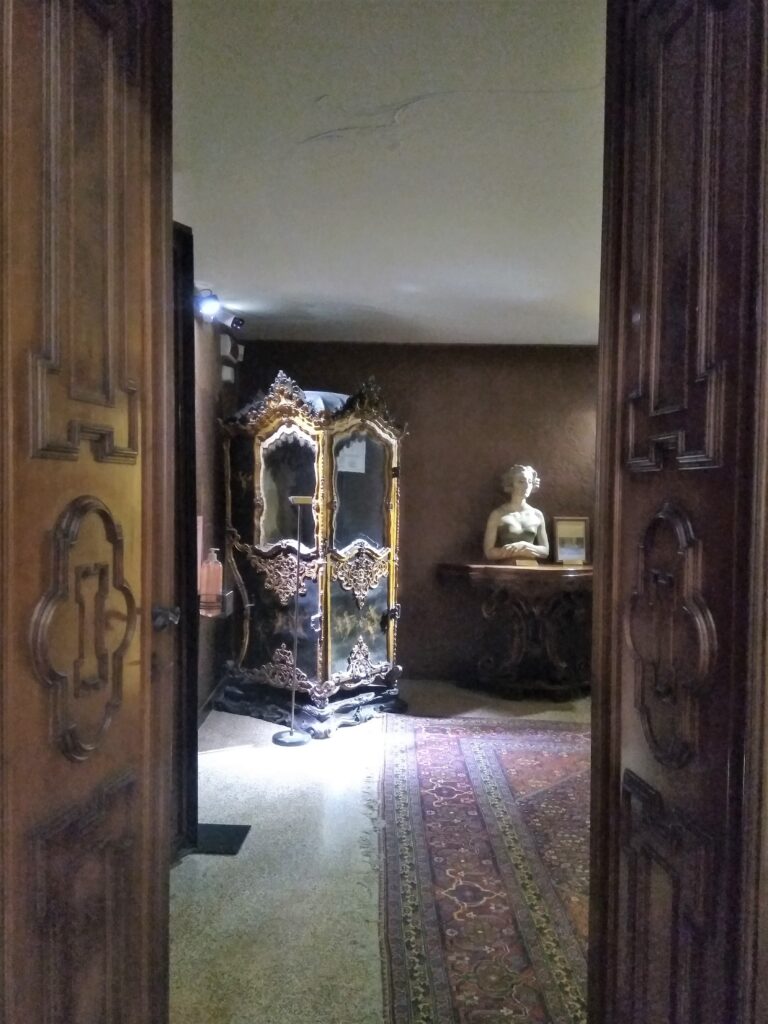Paolo Uccello in Venice and Florence
The painting Saint George, the dragon and the princess by Paolo Uccello was the guest at Palazzo Cini some in Venice, some years ago.
This exhibition is called “The Guest at the Palace,” and the guests are never ordinary. In 2014, Lorenzo Lotto’s Adoration of the Shepherds found space; in 2015, it was the turn of Beato Angelico’s Madonna of Pontassieve. At the same time, on the top floor, two Portraits of Daniele Barbaro by Titian and Veronese were exhibited, lent by the Prado Museum and the Rijksmuseum for the Cinquecentenario of the Venetian humanist. The paintings were accompanied by a series of interesting conferences. In 2016, Andrea Mantegna’s Saint Mark was temporarily visible.

Saint George and the dragon
In 2021, just at the end of the Pandemic, a small but precious panel painted by Paolo Uccello with Saint George and the dragon was on display, coming from the Jacquemart-André Museum in Paris. The painting is one of two versions of the same theme painted by the artist. The other panel, representing Saint George and the dragon, of similar dimensions, is preserved at the National Gallery in London and is remarkably suggestive. Currently, critics tend to attribute them to two different periods with a difference of about twenty years between them. Some authors, such as Andrea de Marchi, believe that the painting, one of the Florentine painter’s most sought-after works, can be placed in the author’s late period. The function of the panel is unknown, but the autography of the work to Paolo Uccello has never been in doubt.
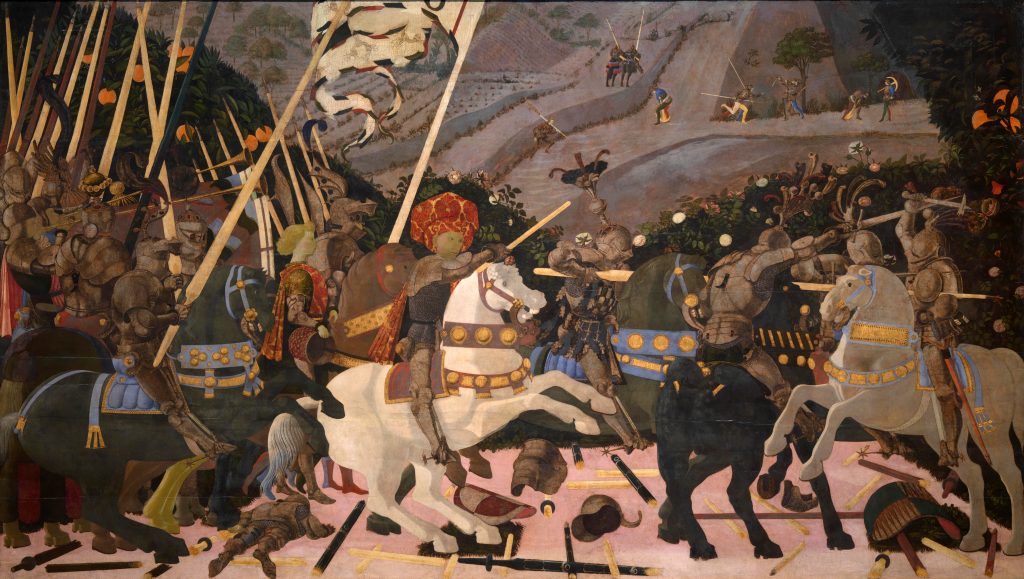
Who has never fallen in love with Paolo di Dono?
Paolo di Dono, known as Paolo Uccello, was born around 1397 in Florence. He was celebrated by sources as a virtuoso of perspective and included by Vasari among the fathers of the Renaissance, along with Filippo Brunelleschi, Donatello, Lorenzo Ghiberti, and Masaccio. Around the second decade of the 15th century, he joined the painters’ guild of San Luca in Florence and later spent a brief period in Venice.
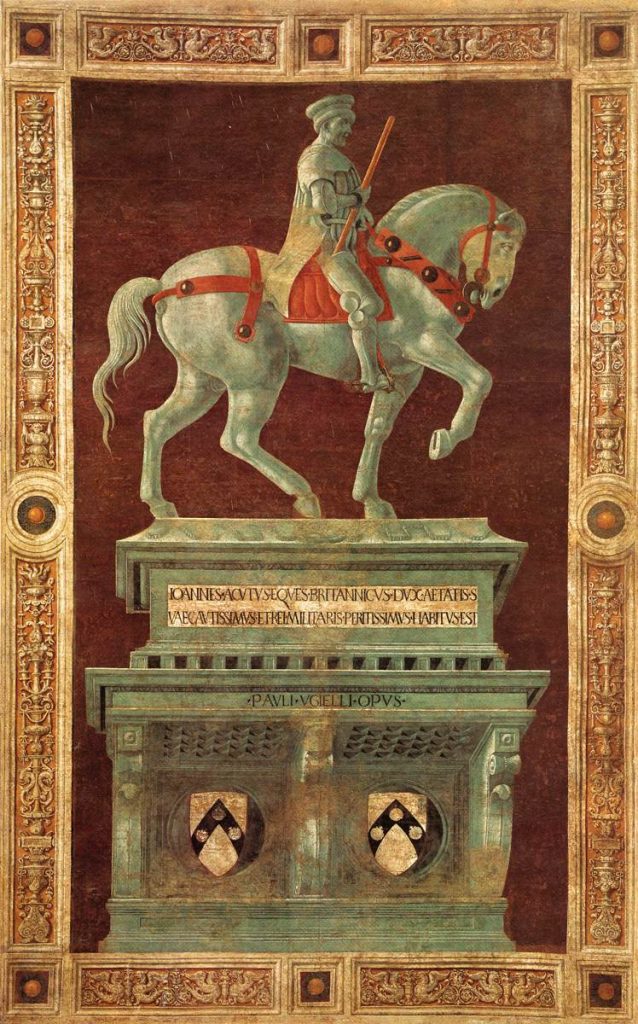
If you encountered him during your studies of the Renaissance, you have probably fallen in love with him, studied and sought his works in Florence and elsewhere and you are not the only one who was fascinated by the painter.
A fresco of Giovanni Acuto by Paolo Uccello at Santa Maria del Fiore in Florence may have caught your attention. The unique perspective of the work, where the frontal perspective of the knight differs from that of the pedestal on which he stands, creates a compelling visual effect. In The Battle of San Romano at the Uffizi, where the painting is clear and colorful, the forest of swords defines the space to the left of the painting, while minor episodes unfold in the background.

Paolo Uccello in Venice
Around 1425, Paolo Uccello was in Venice. What did he leave in the city and, in particular, in the Basilica of San Marco? What is attributed to him? It’s not easy to answer, and there are few certainties.
A few years ago, I was asked to accompany a writer in the city who was writing a book about Paolo Uccello. I expected to meet an art historian, but to my surprise, I found myself in front of a brilliant architect leading an international architecture studio, with degrees in both architecture and art history.
I contributed to his project by providing information on the possible logistics of a man from the 15th century in Venice (how he would have moved, traveled, and the situation in Venice at that time), where an artist active in the basilica would likely have lived. I showed him the city’s works whose attribution was debated, suggesting some essays by Italian historians.
Three years later, I decided to write my first small contribution to Paolo’s possible activity in Venice. You will be able to read this publication of mine probably in 2025. The work, however, is in progress.
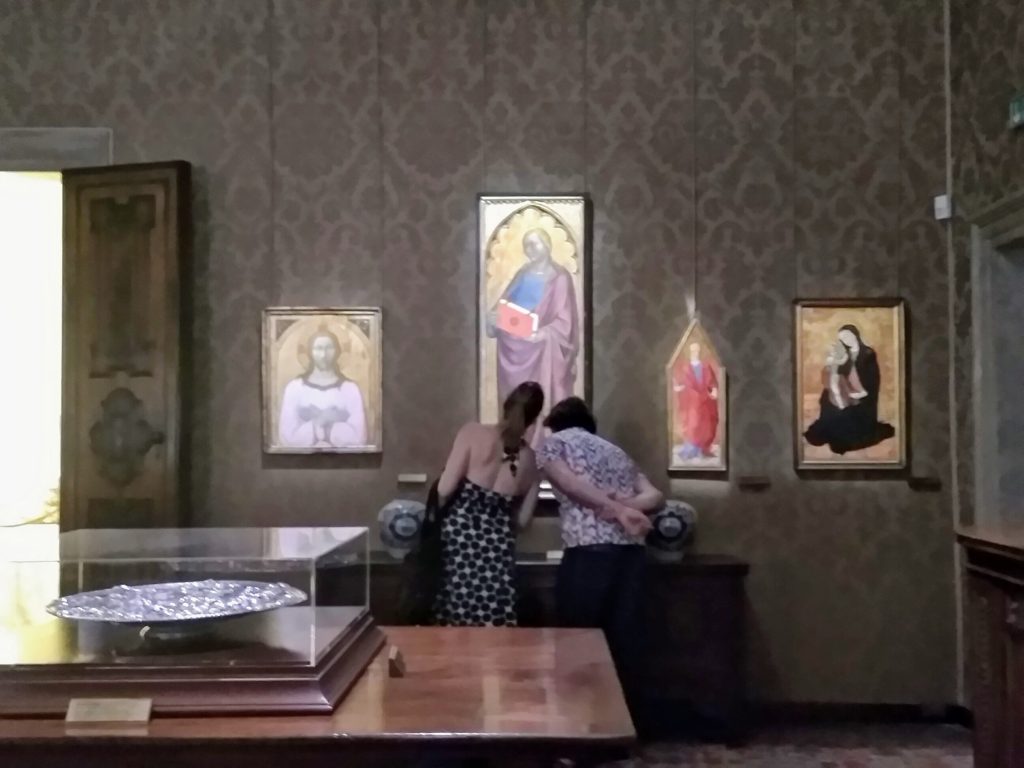
The galleria Palazzo Cini, a visit to an hidden gem
The Cini Gallery was the home of Count Cini and hosts part of the family collection. This museum exhibits Tuscan paintings from the 13th to the 16th century, sculptures, and art objects, along with a small collection of Ferrarese works. The second floor is dedicated to temporary exhibitions dedicated to contemporary art.
Yana Alliata di Monreale left this part of her father’s collection to the Cini Foundation in 1981, as desired by her father Vittorio Cini. This gave rise to this small, atypical museum in the Venetian panorama. It preserves the charm of the gallery-house according to the arrangement desired by Federico Zeri, who curated it until its inauguration in 1984.
At the entrance, a copy of Andrea del Verrocchio’s Spiritello or Putto welcomes you, once believed to be by the master himself, and it is this smiling little spirit that ideally accompanies you during the visit.The museum is currently open from Spring to Autumn, This is my link for the visit.
FIORELLA PAGOTTO — I am an art historian and a writer, author of essays on art history and biographies of artists. I also deal with the history of architecture and the history of architectural restoration. I have been a guide to the city of Venice and the Veneto villas since 2012, when I passed the Veneto Region exam.
Venice, July 2024 Link alla versione italiana
@ Copyright holder 2024 All rights reserved. No part of this publication and pictures can be reproduced, stored in a retrieval system or transmitted in any form or by any means, electronic, mechanicanical or photocopying, recording, or otherwise without the prior permission of the publisher.
